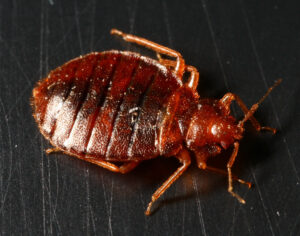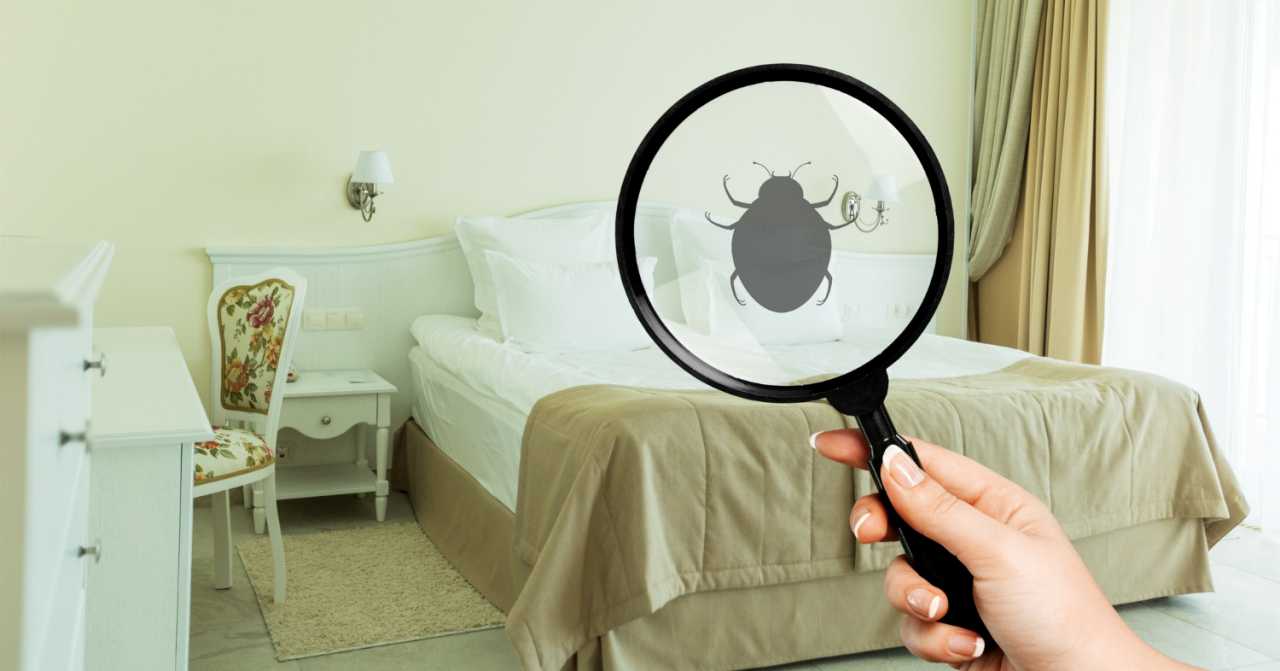It’s no secret that one of every homemaker’s worst nightmares is discovering a bed bug infestation in their home. These tiny, blood-sucking pests can quickly turn your sanctuary into a source of discomfort and frustration. In the Philippines, where warm and humid climates prevail, bed bugs are a common household problem. However, the good news is that there are effective measures you can take to get rid of bed bugs in the Philippines and restore peace to your living spaces.
From professional pest control services to do-it-yourself methods, there are various approaches you can take to tackle a bed bug infestation in the Philippines. Keep on reading to learn more about the options available to you.
What are Bed Bugs?
Bed bugs are persistent pests that can cause significant distress for households.
 Bed bugs are small, oval-shaped insects that feed on the blood of humans and animals.
Bed bugs are small, oval-shaped insects that feed on the blood of humans and animals.
They are typically reddish-brown in color and can be easily overlooked due to their small size, which ranges from 4 to 5 millimeters.
These pests are excellent hitchhikers and can infest homes, hotels, dormitories, and other dwellings.
They hide in cracks, crevices, mattresses, furniture, and even electrical outlets, emerging at night to feed on unsuspecting individuals.
Bed bug infestations have become a growing concern in the Philippines, affecting a significant number of households across the country.
According to recent statistics, it is estimated that around 15% to 20% of households in urban areas have encountered bed bug problems.
This means that out of every 100 households, approximately 15 to 20 of them have experienced or are currently dealing with these troublesome pests.
These statistics highlight the prevalence of bed bug infestations and emphasize the need for effective measures to control and eradicate them.
Why You Need to Get Rid of These Pests ASAP
Getting rid of bed bugs as soon as possible is crucial due to the numerous negative consequences they can bring.
First and foremost, bed bugs are relentless biters, causing itchy and irritating skin reactions.
The constant discomfort can lead to sleepless nights, leaving you fatigued and affecting your overall well-being.
Moreover, bed bugs multiply rapidly, and a small infestation can quickly escalate into a widespread problem, infiltrating not just your bedroom but other areas of your home as well.
These resilient pests can hide in cracks, crevices, and even electrical outlets, making them difficult to eradicate without prompt action.
Delaying bed bug treatment may result in property damage, as these pests can stain furniture, ruin bedding, and leave behind foul odors.
Additionally, bed bugs are known carriers of diseases and can transmit them through their bites, posing a health risk to you and your family.
Signs of Bed Bugs
Bed bugs are elusive creatures that can be difficult to detect, especially for those without experience in pest control.
However, there are several signs you can look out for to determine if you have a bed bug infestation in one of your rooms.
By being aware of these signs, you can take swift action and seek professional assistance if necessary.
- Dark/black stains: Look for dark or black stains on the mattress and surrounding areas. These stains are often bed bug excreta and may appear as small dots or smears.
- Sweet scent: Bed bugs emit an unpleasant, sweet, sickly scent. If you notice an unusual odor in your room, particularly one that seems out of place, it could be an indication of a bed bug infestation.
- Small dark spots: Check your bedding for small dark spots, which are commonly referred to as “fecal pellets.” These spots are actually dried bed bug excrement and may be found on sheets, pillowcases, or mattress covers.
- Live insects and shed skins: Although bed bugs are small (adults typically measure 4-5mm in length), it is possible to spot them with a careful examination. Look for live bed bugs or their shed skins, which they leave behind as they grow and molt.
- Blood spots: Keep an eye out for blood spots on your sheets or mattress. Bed bugs feed on blood, and if they are accidentally crushed or disturbed while feeding, they can leave behind tiny bloodstains.
Where to Look for Bed Bugs:
To effectively identify bed bugs, check the following areas where they commonly hide:
- Bed frames and headboard crevices
- Mattress seams
- Carpets and underlay
- Skirting boards
- Between timber floorboards
- Cracked or broken plaster and peeling wallpaper
- Inside electrical sockets and fittings
- Drawers and cupboards
- Wardrobes
- Bedside cabinets
If you have noticed any of these signs in your home or business, it is advisable to seek professional assistance.
They will offer expert bed bug inspections and control services to help identify and address bed bug infestations promptly.
Moreover, their trained technicians can provide the best solution based on your specific situation.
Remember, early detection is key to preventing bed bug infestations from spreading and becoming more challenging to eradicate.
Stay vigilant and reach out to professionals for guidance and support in dealing with bed bugs effectively.
Step-by-Step Guide to Getting Rid of Bed Bugs
Bed bugs can be a persistent nuisance, but with the right approach, you can effectively eliminate them from your bedroom. Follow these step-by-step instructions to tackle a bed bug infestation:
Step 1: Strip and treat all bedding
- Start by removing all bedding items, including duvet covers, pillowcases, bed skirts, sheets, pillows, and mattresses.
- Treat each item individually using appropriate methods outlined in Step 7.
Step 2: Vacuum the mattress and bedsprings
- Use a vacuum cleaner with extensions to thoroughly vacuum the mattress, paying close attention to all surfaces and crevices.
- After vacuuming, dispose of the vacuum bag to prevent bed bugs from escaping.
Step 3: Treat the mattress and bed springs with insecticide
- Choose an insecticide spray or dust, such as Diatomaceous earth (DE) dust or a low-toxicity contact spray.
- Carefully apply the insecticide on all surfaces, crevices, and creases of the mattress and bed springs, following the instructions and safety precautions mentioned on the product label.
Step 4: Encase the mattress and bed springs
- Utilize specially designed encasements that zip around the mattress and bed springs.
- These encasements prevent bed bugs from escaping or feeding on you while you sleep.
Step 5: Treat the bed frame and headboard
- Thoroughly vacuum all surfaces and crevices of the bed frame and headboard.
- Apply insecticide liberally, ensuring comprehensive coverage.
Step 6: Isolate the bed with interceptor cups
- Place bed bug interceptor cups or platforms under the feet of the bed frame.
- These devices prevent bed bugs from climbing up or down from the bed.
- Ensure that the bed does not touch any curtains, walls, or furniture to prevent bed bugs from using them as bridges.
Step 7: Remove and treat non-furniture items
- Take out all non-furniture items from the room, including curtains, toys, clothes, books, and personal belongings.
- Washable items should be either dry cleaned or machine washed in hot water with a quality laundry detergent.
- Tumble dry them afterward.
Step 8: Systematically treat the rest of the room
- Vacuum all furniture, floors, and surfaces meticulously.
- Apply insecticide as instructed for the bed frame and headboard, ensuring comprehensive coverage.
These steps provide a foundation for eliminating bed bugs from your home.
Always carefully read and follow the instructions on any store-bought pesticide or treatment products to ensure safe and effective use.
By implementing these measures, you can effectively combat bed bugs and reclaim a bug-free living space.
Summary
In conclusion, dealing with a bed bug infestation in the Philippines requires prompt action and thoroughness.
While it can be a distressing situation, there are effective solutions available to eliminate these pesky pests and regain control over your living environment.
Whether you choose to hire professional pest control services or take a do-it-yourself approach, the key is to address the infestation comprehensively, targeting not only the bedding but also mattresses, pillows, furniture, and other potential hiding places.
With determination and the right strategies, you can overcome the challenge of bed bugs and create a welcoming and bug-free living environment.
READ NEXT: How to Apply TESDA Housekeeping Course Online
